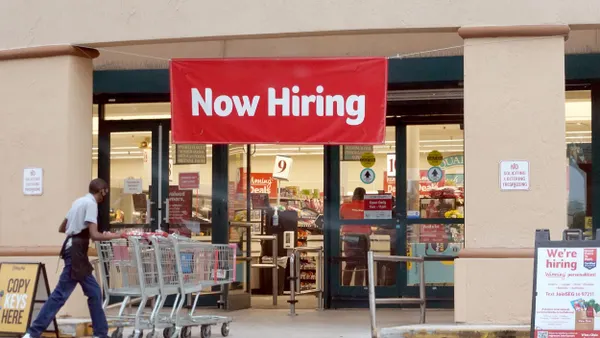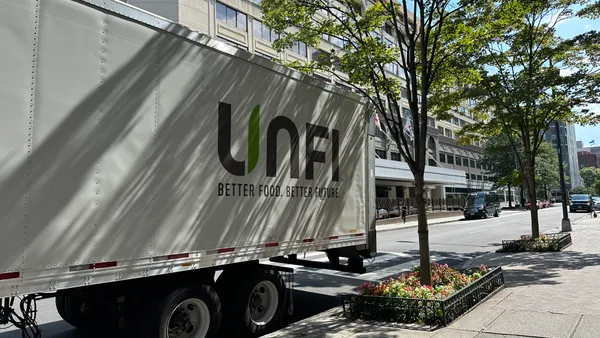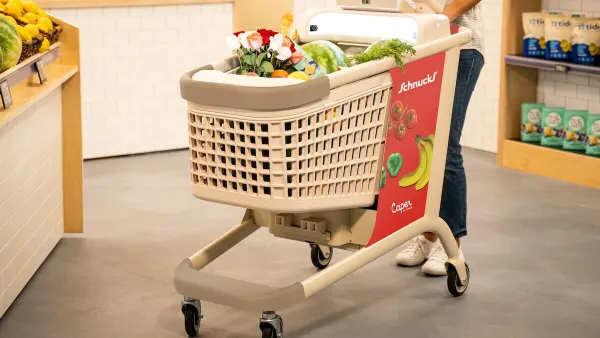Guy Yehiav is general manager and vice president of Zebra Analytics at Zebra Technologies. Zebra Technologies, an end-to-end technology solutions company.
Sustainability is an increasingly popular initiative for retailers across all industries. Grocery and CPG organizations are particularly interested in sustainability movements, reflecting the public’s growing consciousness of wasted food, carbon footprints and other green-oriented movements.
According to the United Nations Environment Programme, approximately one-third of the world’s food supply — amounting to nearly one trillion dollars — goes to waste. In a time of supply chain disruption and impending food shortages, the need to eliminate waste is more important than ever to grocers and consumers alike. Consumers are more inclined to support retailers that are committed to sustainability efforts and eliminating waste. In a Kearney study, 48% of consumers said the pandemic had made them more environmentally conscious, while 55% said they were more likely to purchase environmentally friendly products due to their COVID-19 experiences.
Luckily, new technologies such as blockchain, prescriptive analytics and RFID, are helping grocers and CPG professionals operate more efficiently and reach their sustainability goals through proper planning, increased visibility and better assortment.
Blockchain
Blockchain is key when it comes to reducing food waste and creating a more sustainable grocery industry. Originally designed to monitor cryptocurrency transactions, blockchain is essentially a public digital ledger that monitors, records and reports the movement of goods throughout the supply chain. The product is scanned at various points along its journey from farm to store, leaving a “breadcrumb trail” mapping out its trip.
This accountability helps retailers manage inventory, maintain food quality and eliminate waste through tracking. Consider, for example, if a meatpacker recalls bacon over undeclared allergens. The standard store response is to pull all of that bacon off the shelves, pending a list of specific units involved in the recall. Unfortunately, unaffected bacon may expire while waiting for the detailed list.
With blockchain, a store’s meat manager can simply scan the packages of product and determine if they came from the plant involved in the recall. (With recalls, the outbreak location is often revealed before the specific units are.) Then the unaffected bacon can be left out for sale, while only the affected is pulled. Waste is minimal.
RFID
RFID tags, essentially barcodes providing product information, are another example of technology that can help retailers improve sustainability. Every pallet tagged with RFID (RFID tagging on individual products is not cost-effective) allows grocers instant access to a variety of data about its movements, inventory levels, demand and more. Notably, many grocers leverage RFID to track quality and freshness as food travels through the supply chain. With RFID, grocers are alerted to near-expired food, which allows them to take action to mark down or donate the product to avoid wasting it.
This capability makes a huge contribution in the drive towards sustainability. For example, imagine that a stationary RFID antenna tracking recently delivered pallets in a store issues a weekly report indicating more than $6,000 worth of perishable seafood and meat was lost that week due to the product having sat in the backroom too long. The store manager speaks with the receiving clerks and finds that due to a training gap, employees are not breaking down pallets as quickly as they should be. He orders retraining and losses decrease the following week.
Prescriptive analytics
Blockchain and RFID solutions are made even more effective with the addition of prescriptive analytics. This is an advanced analytics methodology that leverages data to determine what is happening and why, how much it costs not to act, how to optimize the outcome and who should solve it.
Prescriptive analytics further simplifies sustainability initiatives by augmenting blockchain and RFID solution with timeliness and actionability. Consider the above scenario involving meat and fish. RFID antennas don’t necessarily report activity in a timely fashion; some only issue reports once a week. That means over a week’s worth of product was wasted by the time anyone uncovered the problem within the report — not something grocers can afford to have happen regularly. If the involved store leveraged prescriptive analytics as well, the receiving manager would have received a real-time alert stating, “RFID indicates perishable units on pallet #3309 at risk of spoilage. Move to proper coolers immediately.”
This simple, easy-to-understand prescriptive action would direct the manager straight to the source of the problem, allowing him to correct it and stop any further losses. A good prescriptive analytics solution can be configured to focus heavily on potential sustainability issues, such as high shrink claims, low markdown activity, soon-to-expire products and malfunctioning cold-storage units.
With its added components of actionability, automated analysis and timeliness, prescriptive analytics is an ideal complement to blockchain and RFID, especially in driving sustainability.
When retailers have the clearest picture of the location, quality and quantity of their inventory, they can prevent food waste, increase margins and satisfy sustainability-minded customers. Retailers should use the technologies available to them, like blockchain, prescriptive analytics and RFID, to encourage and move forward their sustainability efforts and provide customers with the best available products.













